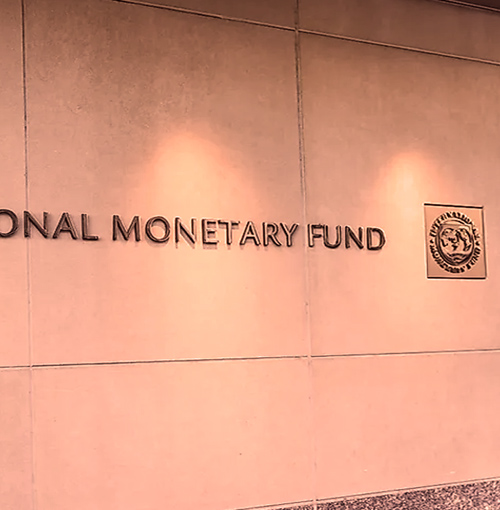
The Economic Trilemma: Breaking Down the Impossible Trinity
Unveiling the concept of an economic trilemma, this article aims to unpack the complexities surrounding the decision-making process in international monetary policy management. Unlike the simpler, binary dilemma, the trilemma in economics presents a trio of solutions, each having its merits and demerits, thus making the choice far from straightforward. By elaborating on the theory of trilemma and illustrating its real-world implications, this article will illuminate the thought process behind these crucial economic decisions.
Economic Trilemma: The Conundrum
At its core, an economic trilemma represents a difficult choice in economic policy decision-making, where three options, each with their own pros and cons, are available. This trilemma plays out in the field of international monetary policy, where countries must select one out of three key decisions, each with a significant influence on their economy.
Coined as the "impossible trinity" or the Mundell-Fleming trilemma, this principle highlights the inherent instability when a country grapples with the three primary choices available while shaping its international monetary policies.
Fact: The Mundell-Fleming model's creator, Robert Mundell, was awarded the Nobel Prize in Economics in 1999 for his work in this area.
Unraveling the Trilemma
These three primary options available in the Mundell-Fleming trilemma include:
- Determining a fixed currency exchange rate
- Permitting free capital flow sans a fixed currency exchange rate
- Implementing an autonomous monetary policy
Owing to their mutually exclusive nature, only one of these options can be put into effect at any given time.
Important: In the context of globalization, the trilemma emphasizes that countries cannot simultaneously pursue a stable foreign exchange rate, free capital movement, and an independent monetary policy.
The underlying challenge of the trilemma arises from the friction between the openness of a country's economy and the control it wishes to retain over domestic financial conditions. Striking the right balance between these fundamental aspects of economic policy remains a source of constant debate among policymakers and economists alike.
Understanding the Triangular Conflict
While the triangular conflict of the trilemma is simple in theory, its practical application and consequences can create a ripple effect across a nation's economy. The delicate interplay of exchange rates, monetary policy, and capital flows can significantly influence economic growth, inflation, employment levels, and overall financial stability.
- Option A: A nation can opt to stabilize exchange rates with certain countries while maintaining a free flow of capital with others. However, in such a scenario, an independent monetary policy becomes untenable due to potential currency arbitrage that could arise from interest rate fluctuations.
- Option B: Countries can also choose a free flow of capital across all foreign nations while retaining an autonomous monetary policy. As fixed exchange rates and free capital flow cannot coexist, only one can be chosen, excluding the other.
- Option C: If a nation decides to keep fixed exchange rates and an independent monetary policy, it cannot permit a free flow of capital. Yet again, the two elements—fixed exchange rates and free capital flow—are mutually exclusive.
Remember: The consequences of the trilemma are far-reaching, influencing not just exchange rates but also affecting economic growth, inflation, and financial stability.
Governing Choices
The tough part for governments in shaping their international monetary policy is to determine which option to adopt and how best to manage it. A general trend observed globally is a preference for Option B, allowing countries the autonomy of an independent monetary policy while using the policy to navigate the flow of capital.
While Option B is generally favored, it is worth noting that different economies at varying stages of development may benefit from different approaches. For instance, developing economies may sometimes find a fixed exchange rate more beneficial in terms of attracting foreign direct investment and maintaining economic stability.
Intellectual Framework
The trilemma policy theory owes its origins to economists Robert Mundell and Marcus Fleming, who independently outlined the relationships between exchange rates, capital flows, and monetary policy back in the 1960s. It was later in 1997, that Maurice Obstfeld, IMF's chief economist, encapsulated their model as a "trilemma."
Contemporary economist Hélène Rey argues that the trilemma is often oversimplified. Rey contends that many modern nations grapple with only a binary choice, or a dilemma, as fixed currency pegs often fall short of their desired effectiveness.
Fact: Rey's argument about the oversimplification of the trilemma presents a critical perspective that challenges traditional understanding of the theory.
The intellectual framework of the trilemma, as presented by Mundell and Fleming, has evolved over time to address the changing dynamics of the global economy. Today, the trilemma remains a critical tool in understanding the complexities of the international financial system and the trade-offs nations must make.
Tip: When interpreting the trilemma, consider modern arguments and perspectives to get a comprehensive understanding of its current relevance.
The Trilemma in Practice
An intriguing illustration of the trilemma can be seen in the establishment of the Association of Southeast Asian Nations (ASEAN). The member nations, by permitting free flow of capital and maintaining their independent monetary policies, have essentially adopted Option B. This approach allows them to exercise control over their monetary policy while encouraging robust economic activity across borders.
Alternatively, the Latin American Debt Crisis in the 1980s demonstrated a challenge in managing the trilemma. In an effort to foster economic stability, many Latin American countries chose to fix their currency exchange rates while still permitting a free flow of capital (Option A). However, this approach backfired, leading to significant economic instability and eventually the crisis.
The dynamic nature of international economics means that countries continually reassess their position within the trilemma. These decisions are often influenced by a myriad of factors, such as global economic conditions, domestic economic goals, geopolitical relationships, and even historical precedents.
Remember: The practical application of the trilemma has been evident in several historical and contemporary economic events globally.
The trilemma in economics signifies a complex decision-making process in international monetary policy management, offering three equally viable but mutually exclusive options. The challenge for any nation lies in selecting the most beneficial choice and navigating its implications. Although an intricate concept, understanding the economic trilemma can shed light on some of the fundamental considerations underpinning a nation's monetary policies.
- Share this article





